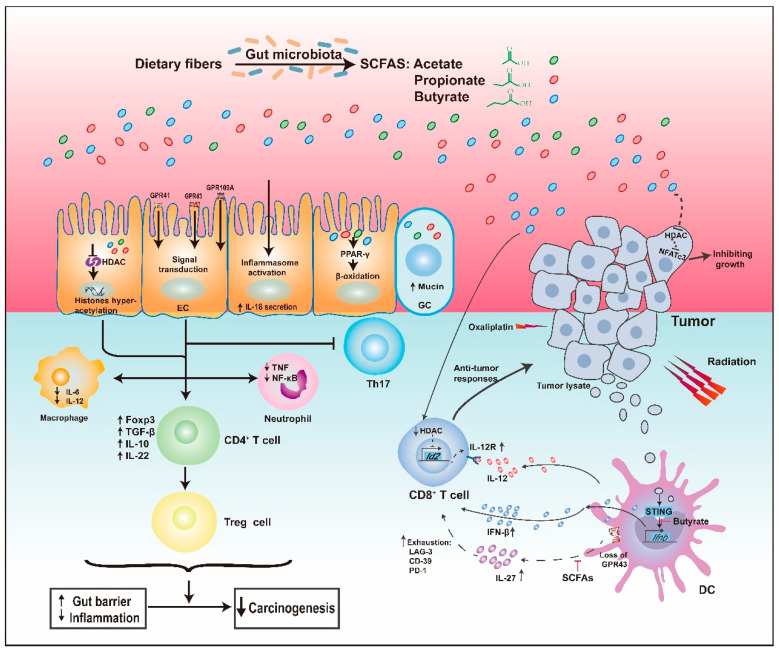Figure 1.
SCFAs and their Immunomodulatory Functions. SCFAs, mainly consisting of acetate, propionate, and butyrate, act as histone deacetylase (HDAC) inhibitors and ligands of G-protein-coupled receptors (GPCRs), leading to the expansion and differentiation of FOXP3+ regulatory T (Treg) cells, accompanied by upregulation of immunosuppressive IL-10 and transforming growth factor-beta (TGF-β), downregulation of proinflammatory cytokines in macrophages and neutrophils, and inhibition of differentiation towards T helper type 17 (Th17) cells, thereby suppressing inflammation and carcinogenesis. Significantly, SCFAs, especially butyrate, could influence the antitumor responses of CD8+ T cells by regulating signaling pathways in dendritic cells (DC), involving IL-12, IL-27, and IFN-β, which also have an impact on the combination therapy of tumor. Additionally, SCFAs directly inhibited tumors by inhibiting HDAC. Regarding their other protective properties, SCFAs could increase the secretion of mucin, enhance epithelial integrity by activating inflammasome, and activate the peroxisome proliferator-activated receptor-γ (PPAR-γ) pathway, which maintains anaerobic conditions. See the text for details. EC, epithelial cell; GC, goblet cell; NF-κB, nuclear factor κB; IFN-β, interferon β.

